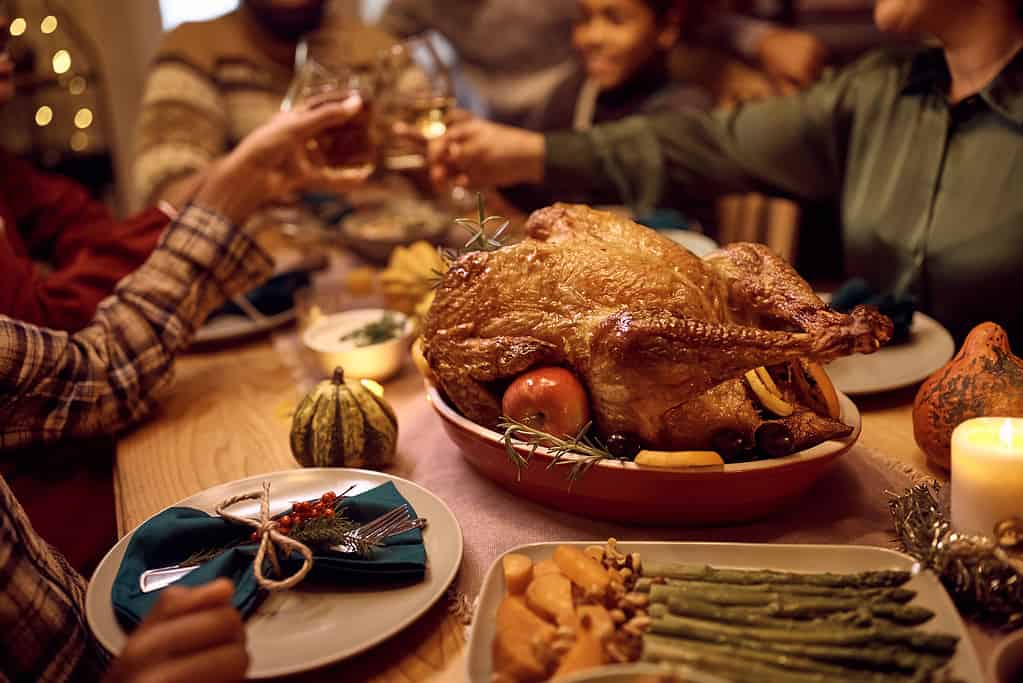
Discover why Americans eat turkey on Thanksgiving and the origins of the holiday.
©Drazen Zigic/iStock via Getty Images
Origin of Thanksgiving in America
The first Thanksgiving occurred when the pilgrims and Native Americans gathered to celebrate a bountiful harvest. When the pilgrims arrived in New England in 1620, they encountered many troubles. First, disease spread quickly among the travelers, cutting their population in half. Additionally, the pilgrims were unequipped to farm the land and to survive northeastern winters. As a result, many pilgrims passed away during their first winter at Plymouth Colony.
Luckily, the pilgrims met some Native Americans while at Plymouth. The neighboring Wampanoag tribe sent an English-speaking representative to help the pilgrims survive in the New World. The representative’s name was Squanto, and he taught the pilgrims how to plant important crops, such as corn, and how to hunt for food.
Once Squanto taught the pilgrims these new skills, they experienced their first successful harvest. To celebrate the harvest, Governor William Bradford decided to host a massive feast and day of thanks. The feast lasted around three days and attendees included both the pilgrims and the Wampanoag tribe. This celebration became known as the first Thanksgiving, and it would inspire a favorite American holiday for centuries to come.
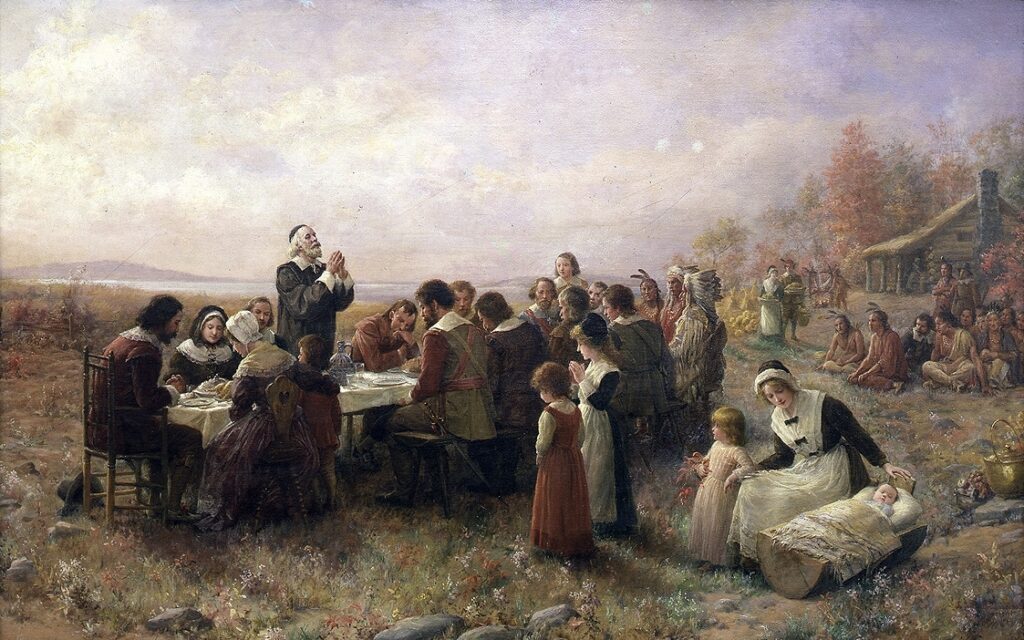
The first Thanksgiving celebrated the first successful harvest and a relationship with the Wampanoag.
©Jennie Augusta Brownscombe, Public domain, via Wikimedia Commons – License
Was Turkey Served at the First Thanksgiving?
Few records of the first Thanksgiving specifically indicate which foods were served during the feast. Therefore, it’s unknown whether turkey was present at the first Thanksgiving. However, other foods that were served at the feast might have included deer or various types of wildfowl, such as ducks, geese, or swans. Additionally, the pilgrims and Native Americans may have eaten seafood due to their proximity to the coast. Vegetables at the first Thanksgiving may have included peas, beans, and squash.
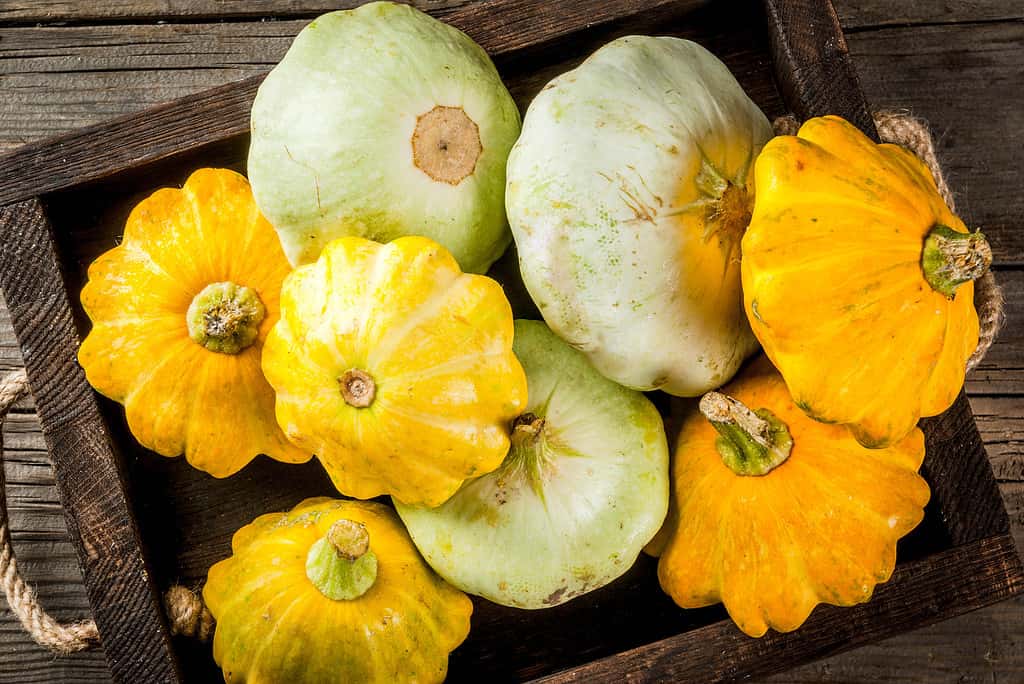
One vegetable served at the first Thanksgiving may have been squash.
©Rimma_Bondarenko/iStock via Getty Images
Why do Americans Eat Turkey on Thanksgiving?
Several factors influenced the popularity of turkey in the United States, which eventually caused turkey to become the centerpiece of the Thanksgiving table. For one, wild turkeys were extremely common in the U.S., recording high population numbers. Additionally, the bird was readily available, both in nature and on farms. Turkeys on farms were raised to be slaughtered for meat, as they did not produce other valuable goods–such as eggs and milk–like chickens and cows produced.
Finally, turkeys were a popular meal centerpiece due to their size; the bird could feed a whole family on its own with some meat to spare. While these factors certainly increased the turkey’s popularity in the U.S., they did not catapult it onto the Thanksgiving table. Rather, it was two writers who curated the image of the turkey as a holiday dish.
First, A Christmas Carol by Charles Dickens included a turkey as a holiday meal, making the bird synonymous with celebration and thanks. Another writer named Sarah Josepha Hale illustrated a cozy Thanksgiving scene in her book Northwood, and the scene included a turkey as the entrée. Additionally, Hale campaigned for President Abraham Lincoln to establish Thanksgiving as a national holiday, a request he fulfilled in 1863.
The increasing availability and popularity of turkey in the United States combined with writers’ descriptions of turkey as a holiday staple caused many Americans to associate turkey with Thanksgiving. Now, turkey remains the main dish of Thanksgiving meals across nearly every household in the United States.
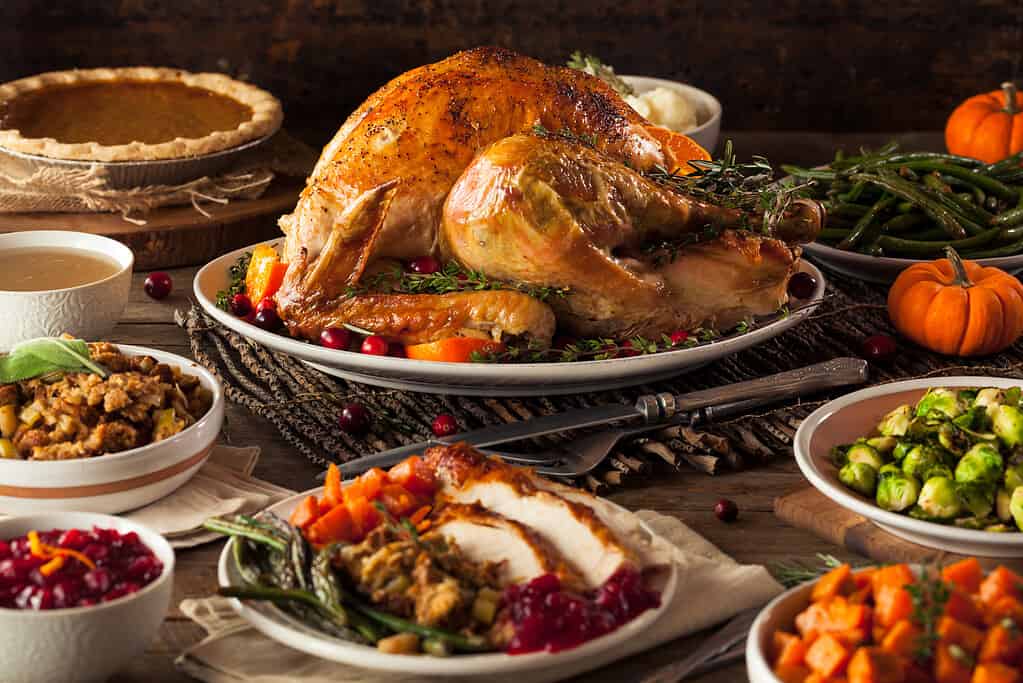
Turkey gained popularity in the United States and is now associated with the Thanksgiving holiday.
©bhofack2/iStock via Getty Images
What Do Turkeys Symbolize?
It’s easy to say that turkeys represent gratitude due to their association with Thanksgiving. However, they symbolize other important virtues, too. For instance, turkeys are often associated with wealth or abundance. During Thanksgiving, this virtue is best reflected by the wealth of friends and family who gather to celebrate the holiday.
Turkeys also symbolize strength and courage. After all, the pilgrims had to demonstrate strength and courage while trying to survive in a foreign land. Therefore, the turkey can represent this historical struggle at Thanksgiving, too. Finally, turkeys may also represent new beginnings. The first Thanksgiving represented the new beginning of Europeans in the Americas and the start of a new tradition that celebrated gratitude and plentifulness.

Turkeys symbolize gratitude, wealth, courage, and beginnings, themes evident at the first Thanksgiving.
©davidsdodd/iStock via Getty Images
What Other Foods Do Americans Eat on Thanksgiving?
A turkey at Thanksgiving isn’t complete without an array of sides and desserts. On Thanksgiving, Americans may eat vegetables like corn or green beans. In addition, mashed potatoes with gravy and stuffing are typically a staple of this holiday. Cranberry jam also pairs well with any Thanksgiving dish.
A popular favorite during this feast includes sweet potato casserole, and some people choose to top their sweet potatoes with either pecans or marshmallows. Finally, delicious, buttery rolls are usually present at the Thanksgiving table, and hosts may also serve ham as an alternative to turkey.
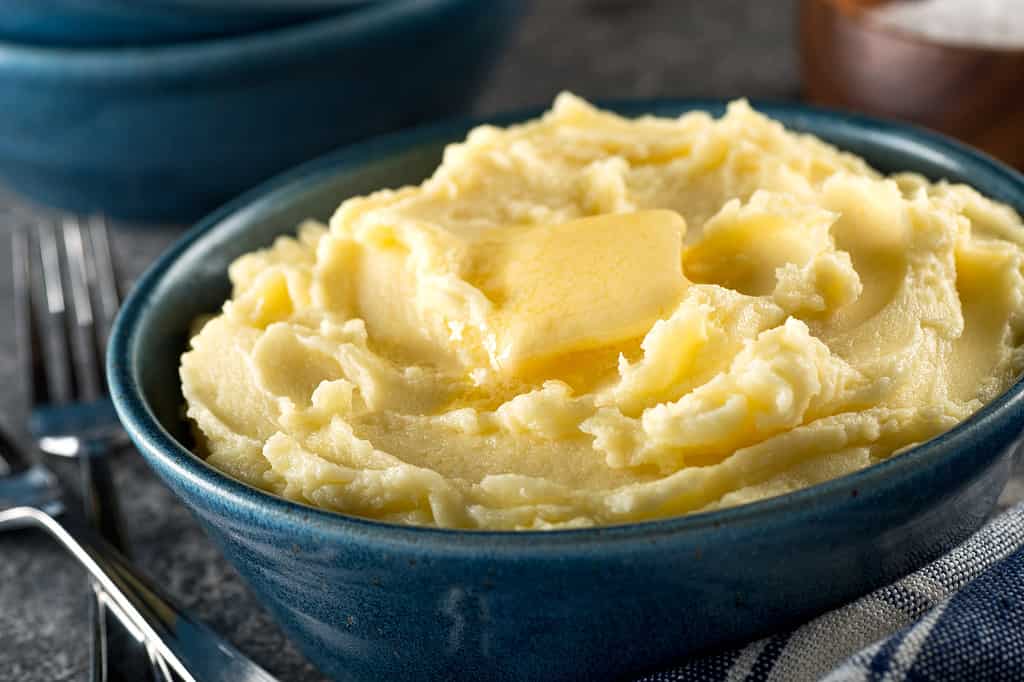
Mashed potatoes are a popular side served at Thanksgiving dinner.
©Fudio/iStock via Getty Images
The photo featured at the top of this post is © Edalin/iStock via Getty Images
Thank you for reading! Have some feedback for us? Contact the AZ Animals editorial team.






